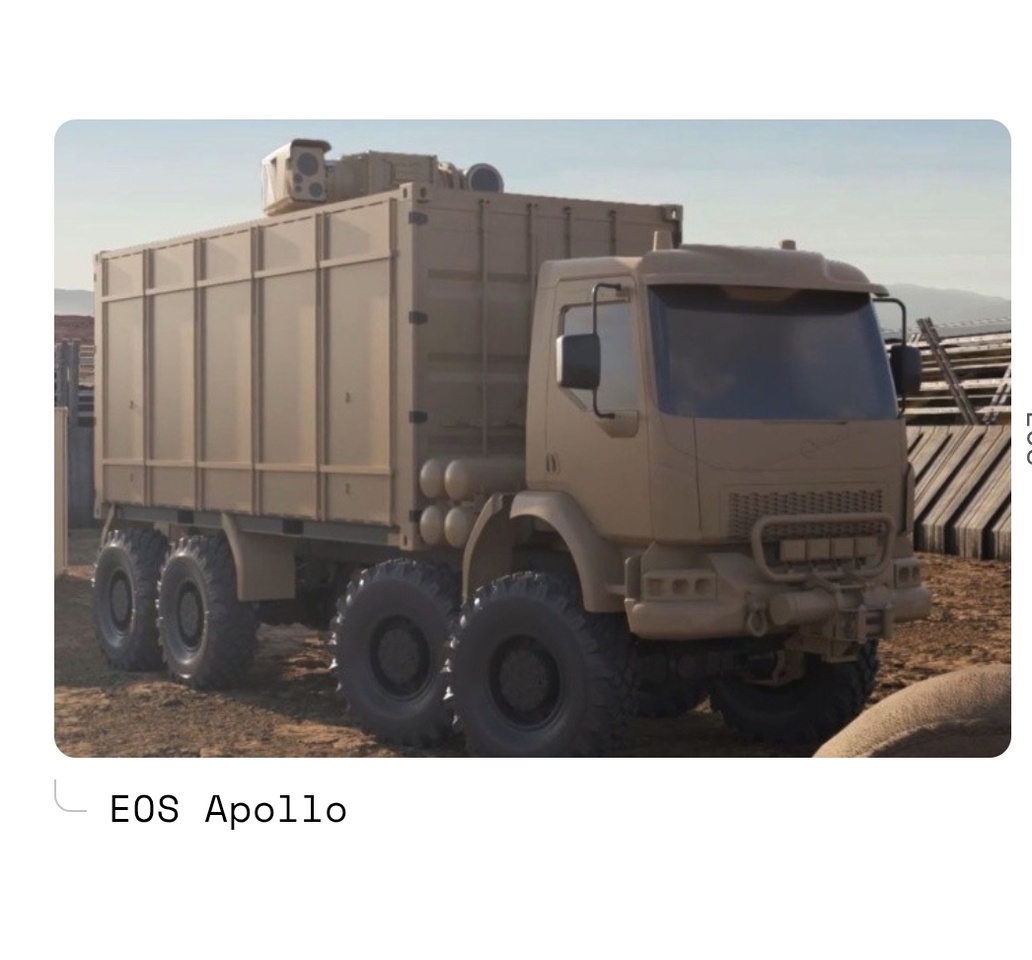$EOS (+10,33 %)
@Multibagger
$ESLT (+1,2 %)
Hello my dears,
with the drone attack on Poland which was fought with very expensive weapons. Probably a big topic now, how relatively cheap drones can be fought with correspondingly cheap weapons.
Feel free to share your opinion in the comments. I'm looking forward to it.
The Australian armaments company EOS presents a containerized 150-kilowatt laser system that is completely self-sufficient against swarms of drones.
Australian defense manufacturer Electro Optic Systems (EOS) has unveiled its Apollo High Energy Laser Weapon(opens in new window) - a laser weapon system that can autonomously eliminate up to 200 medium-sized drones without relying on external power sources.
The development of air defense laser systems has been ongoing for decades, with technical challenges including reliable target detection, tracking capabilities, sufficient destructive power and robustness of the system under operational conditions.
The Apollo weapon system fits into a standard 20-foot shipping container and has two emitter units mounted on the top of the container. EOS reports that the system can eliminate drone targets at ranges of up to 3 km and disable optical sensors at ranges of up to 14.5 km. The platform provides 360-degree coverage with fast target acquisition capabilities.
Technical specifications and operational performance
The announced key data shows that Apollo can engage targets in a 60-degree arc within 700 milliseconds and potentially neutralize 20 Group 1 drones per minute. The system targets unmanned vehicles ranging from 9 kg Group 1 units to 600 kg Group 3 platforms.
The laser weapon's autonomous power supply distinguishes it from competing systems that require a continuous external power supply. According to the manufacturer, the battery enables use against around 200 drone targets. When connected to the main power supply, the system is said to have an unlimited operating capacity - more precise details were not provided.
According to reports, EOS has already concluded the sale to an unnamed NATO member state. How many units are involved and whether they have already been put into service remains unknown for the time being. The system is Itar-free(opens in new window), meaning that it does not require an export license from the USA.
Countries rely on lasers, microwaves or kinetic defense against drones
In China, on the other hand, microwave weapons are used to defend against swarms of drones. China South Industries Group Corporation (CSGC) and Norinco have presented a truck-based system for this purpose. The microwave weapon is mounted on an 8×8 truck from the Shacman SX2400/2500 series and also has a radar for target detection and tracking.
Russia, on the other hand, relies on small missiles against drones and has presented the Panzir SMD-E air defense system. This system dispenses with traditional machine guns and relies on a large number of small missiles and is intended for stationary use. Up to 48 of these fit into the launchers.
The UK wants to use lasers for air defense in the future. However, the new Dragonfire system is still at the testing stage and has already completed a number of firing exercises.
The Israeli armaments company Rafael Advanced Defense Systems and Elbit only announced in September 2025 that the high-performance Iron Beam 450 laser system was ready for series production and was about to be delivered to the Israeli armed forces. The system is said to be capable of intercepting rockets, mortar shells, enemy aircraft and drones. It is likely to be the first laser weapon to be put into active service.
September 20, 2025 at 14:30 / Andreas Donath













